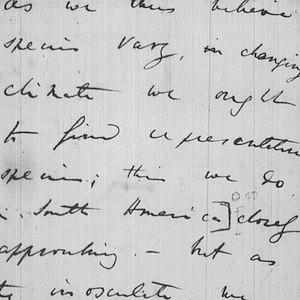-
-
Step-by-step course guide
-
What you will learn in this course
-
About the course: David Kinney & Simon DeDeo
-
Introducing the course Teaching Assistant
-
Join the discussion
-
-
-
Introduction to Humanities Analytics
-
-
-
-
Analyzing "Excellence" in the Humanities
-
-
-
-
-
-
Case Study: Capitalism & Democracy
-
Chapter 5 part 1 Overview
-
The Marriage of Capitalism & Democracy part 1
-
Test Your Knowledge part 1
-
Test Your Knowledge part 1: Explanations
-
Chapter 5 part 2 Overview
-
The Marriage of Capitalism & Democracy part 2
-
Test Your Knowledge part 2
-
Test Your Knowledge part 2: Explanations
-
Assignment: Case Study: Capitalism & Democracy
-
-
-
-
-
Measurement & Operationalization
-
-
-
A Philosophical Approach to Probability
-
-
-
Guest Lecture: Marco Buongiorno Nardelli
-
-
-
-
-
Guest Lecture: Nan Z. Da
-
-
-
Wrap-Up
-
What's Next
-
3.1 Guest Lecture: Lauren Klein » Lecture Overview
The goal of this guest lecture
As with all guest lectures, the aim is to inspire you by providing exemplars of Humanities Analytics projects. Lauren Klein's lecture will provide you with a vision for potential research projects related to any of the following: 1) the abolition of slavery in 19th century America; 2) the utility of newspapers as a source; 3) notions of semantic leadership; and 4) race, gender, and feminism.
Key terms to keep in mind
Intersectional feminism Broad term for a family of feminist theoretical frameworks that enable critiques of structures of power, i.e., critiques that explain why some groups are oppressed on the one hand, or privileged on the other. Examples include the Combahee River Collective's concept of interlocking systems of oppression, Kimberlé Crenshaw's notion of intersectionality, and Patricia Hill Collins' matrix of domination.
Abolitionist newspapers Newspapers published and distributed prior to the United States' abolition of the enslavement of Africans in 1865, which advocated for, and spread news relating to, said abolition.
Invisible labor Concept from feminist labor studies first developed in the context of understanding the social treatment of housework; also called "reproductive labor". Housework is "invisible" labor in two senses. First, it takes place in the home, and so is literally invisible to anyone outside of the home. Second, it is unpaid, and so is not recognized as work within the context of a capitalist society. Klein's lecture aims to highlight the invisible labor performed by woman editors of abolitionist newspapers.
Pointwise mutual information Mathematical measure of associations between features. Klein uses point wise mutual information to measure the significance of various topics ("T") to the editors of abolitionist newspapers ("E") – given "E", how often does "T" also occur. The greater the pointwise mutual information, the more important the topic is deemed to be to the editor.
Semantic change Change in a word's meaning over time or other dimensions. Klein measures semantic change for a given word by tracking: 1) the words that appear alongside it (i.e., the word's context), and 2) the year in which the word was published. This approach assumes that semantics, or meaning, of a word can be inferred from the context in which that word appears.
Semantic leadership Extent to which word usage by one entity is subsequently adopted by others. Specifically, Klein measures how often novel semantic usage in a given newspaper is mirrored by other newspapers. When a newspaper is a semantic leader, its semantic usage better predicts the later usage of that word in other newspapers compared to those other newspapers' own, earlier usage of the word.
Network Centrality The extent to which a given entity, or node, in a network is connected to other nodes in the network; a highly connected node is often referred to as a "hub". For example, in a network of UK train stations (nodes) linked by rail lines (connections or edges), London is a hub with high network centrality: one can get directly to many other stations from London. In Klein's analysis, she represents newspapers as nodes, with leader-follower connections between them. Newspapers with a high network centrality score are "leader" hubs in the sense that many other newspapers follow them. Other newspapers may be "follower" hubs in the sense that they follow a large portion of the newspapers in the corpus, without being leaders themselves. Klein examines the relationship between these two variations of network centrality.
